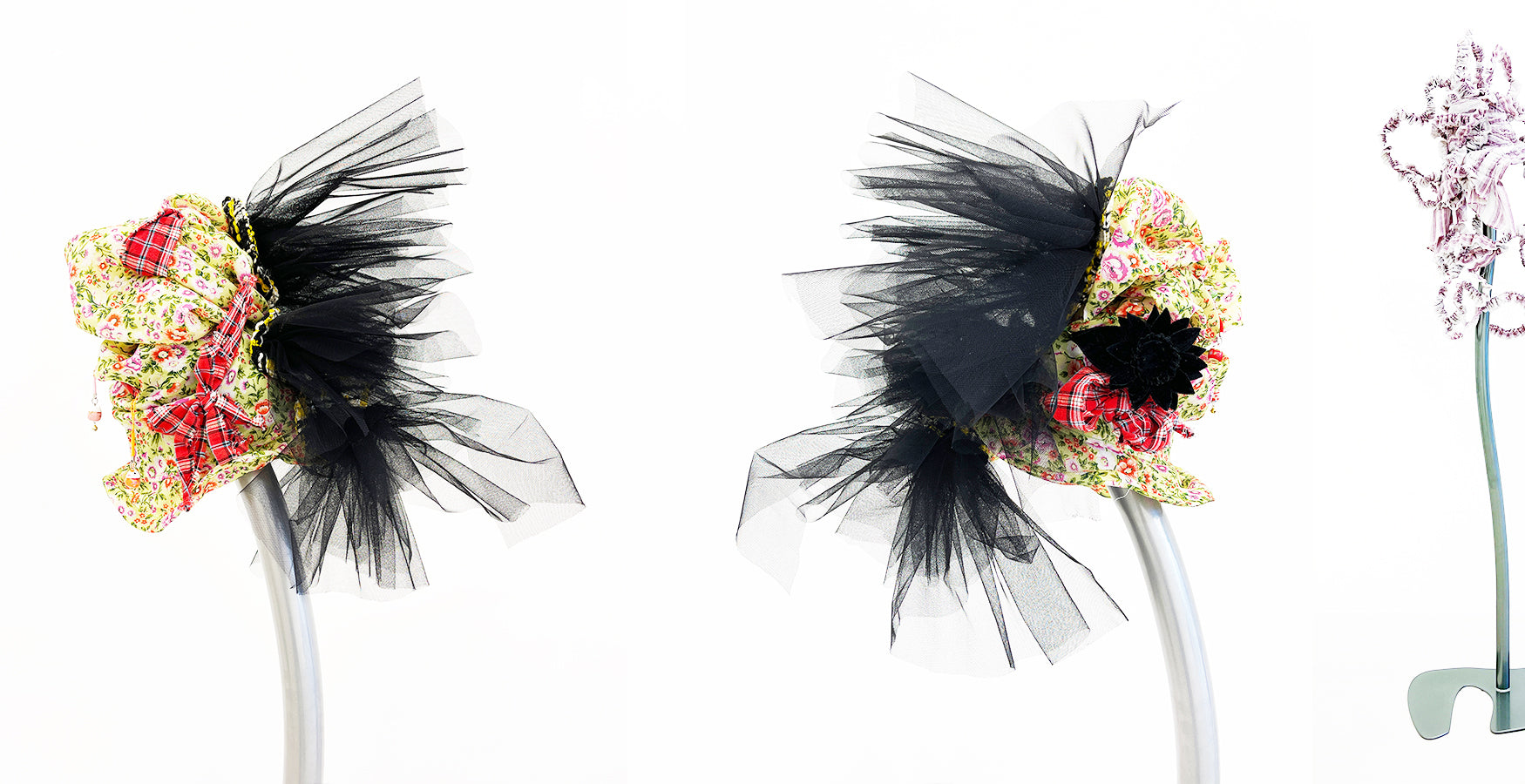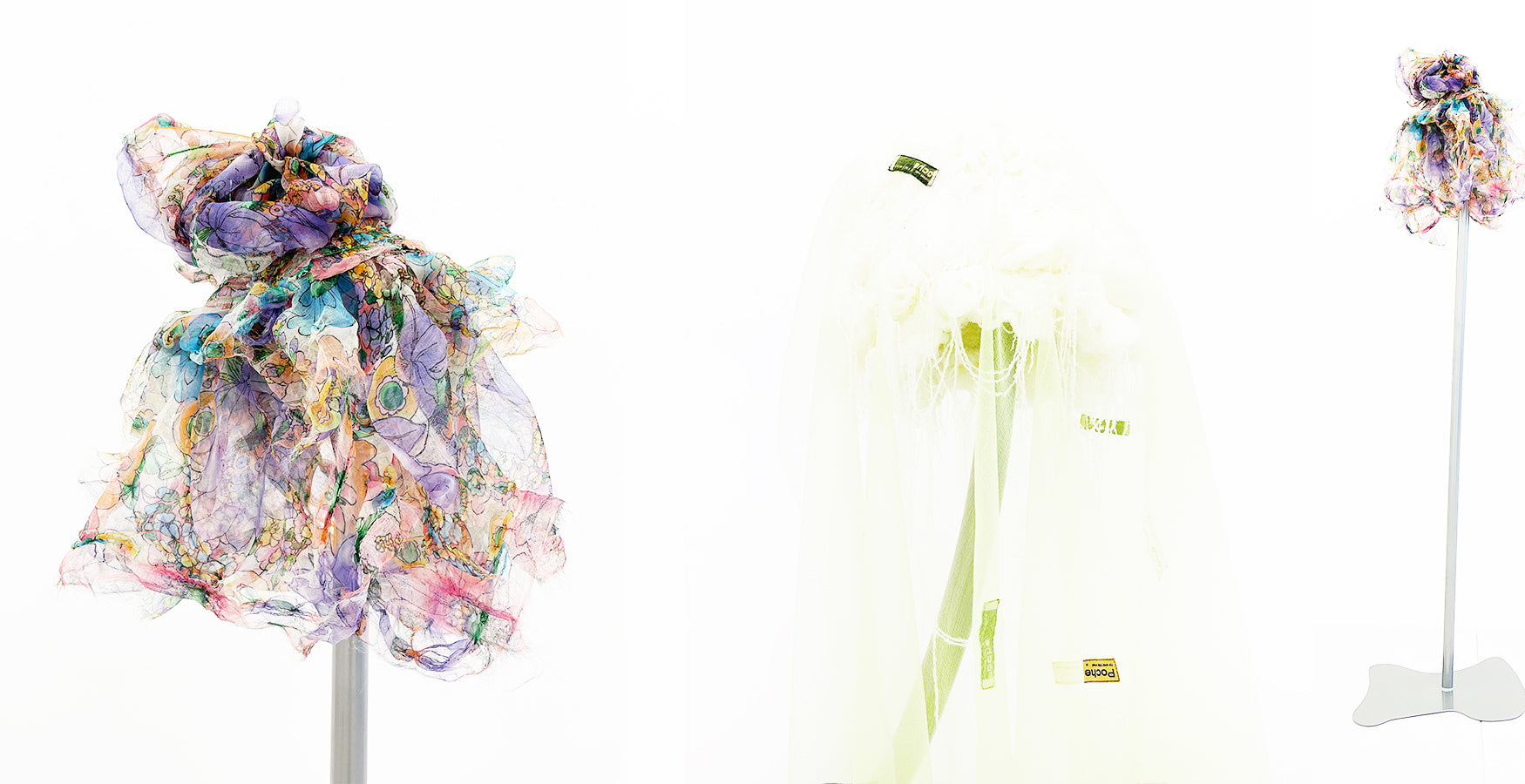







LIVING DREAM - 2021
Growing within this garden are fantasy hats. This garden, like many, cultivates livelihood while holding space for the public.
The gardening industry in California was heavily Japanese American before World War II, and though that work would range from tending the gardens of Beverly Hills to community spaces, those workers also began to create traditional Japanese gardens throughout the state. Japanese Americans began to put roots down in more ways than one, by creating something Japanese in America, they in turn became Japanese Americans. In many ways this was an attempt to use land as a method of melding two cultures, rather than assimilate. A method of having both coexist. After the mass incarceration of Japanese Americans on the Pacific coast, that very gardening continued to thrive while also transforming within the internment camps.
These gardens behind barbed wire were no longer dictated by exoticization, and took on new forms. The focus gravitated away from authenticity and tradition, but rather, creativity and adaptability to the harsh surroundings. These became qualities that were integral to the Issei and nisei experience. Through using what was available, new forms and ideas could be birthed in order to maintain beautification and well being while simultaneously solving issues of poor food quality within the camps.
Through this performance, and what remains afterwards, a new landscape is created. One that utilizes those very same methods of adaptability. The hats grow from another's endless cycle of excess fabric, called Fabric Liability, yardage that has been created but can no longer be used for production. Here the handmade pieces use a variety of textiles contributed by Marc Jacobs. It becomes a form of hat agriculture with the aim of cultivating excess fabric growths and using them for underdeveloped hat bases. Perched atop hat stems, hats are trimmed into existence from their previously wild form, to which those trimming are later used again. The hats themselves continue to grow through the lives of those who carry them.
Friendship gardens thrived in the mid 1960s as a form of cultural and ethnic pride for Japanese Americans, which existed primarily in California. Here, we revive and reclaim the Friendship Garden and invite you in.
At Sow & Tailor 8-15-21